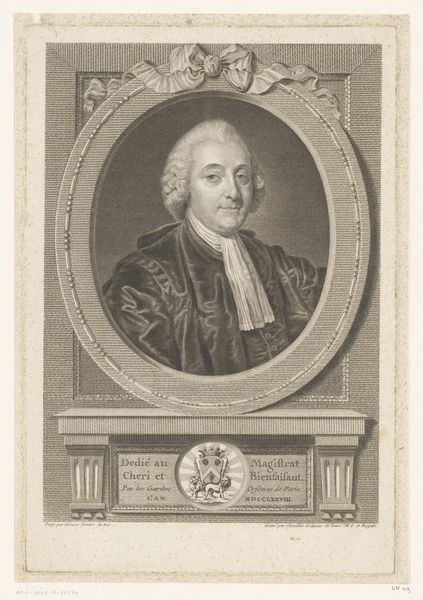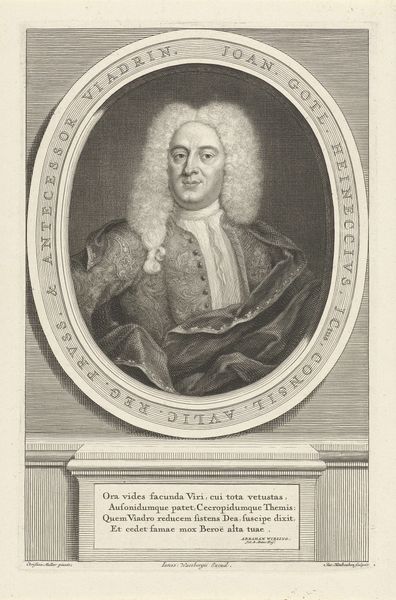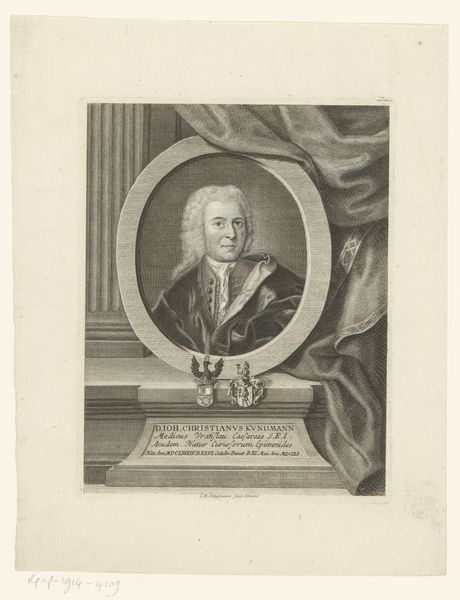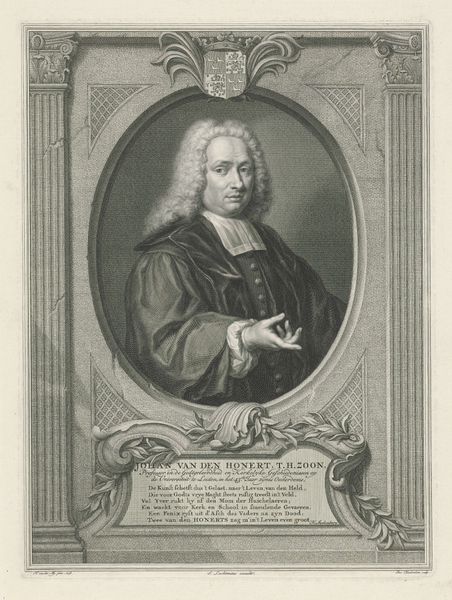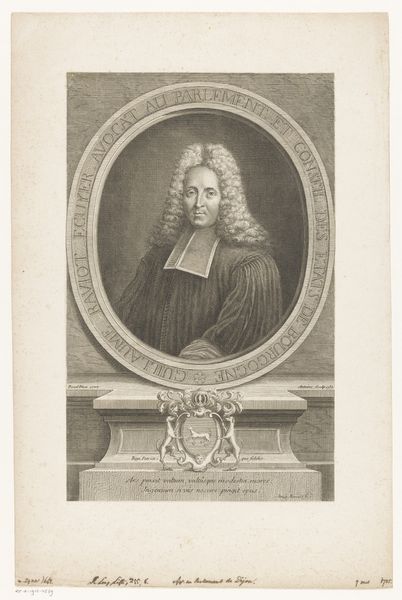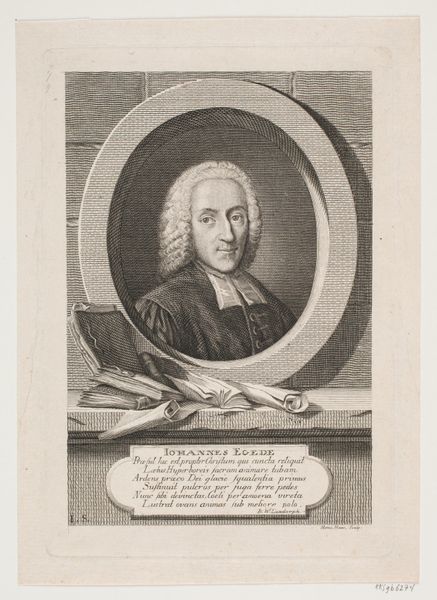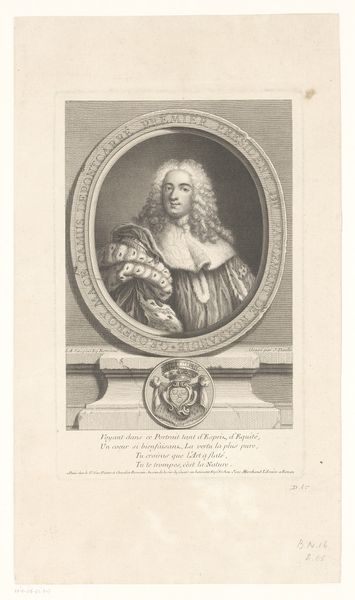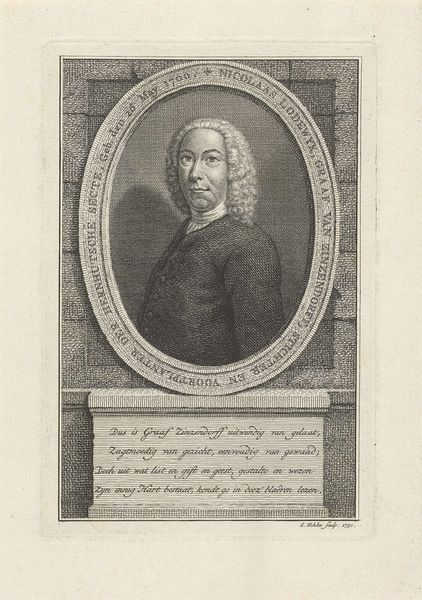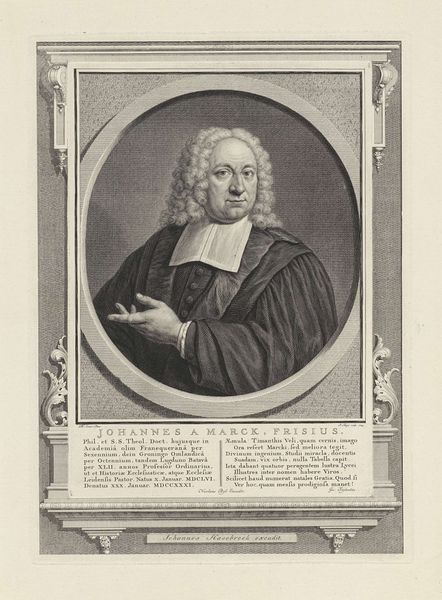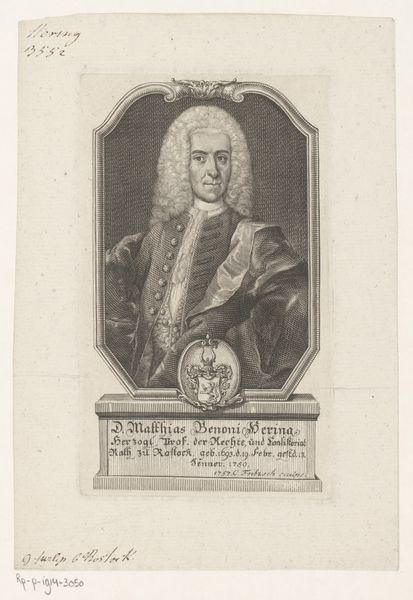
engraving
#
portrait
#
baroque
#
old engraving style
#
pencil drawing
#
history-painting
#
engraving
Dimensions: height 376 mm, width 282 mm
Copyright: Rijks Museum: Open Domain
Editor: Here we have Jean-Étienne Liotard’s "Portrait of René Hérault," made sometime between 1730 and 1735. It’s an engraving, so the texture and line work really stand out. I'm struck by how crisp the image is. What can you tell me about this engraving? Curator: Considering Liotard's "Portrait of René Hérault" through a materialist lens reveals interesting aspects. As an engraving, it's inherently about reproduction and dissemination. It wasn't a unique artwork destined for a wealthy patron alone but intended for wider consumption. How do you think this medium shapes our understanding of Hérault himself? Editor: That's a great point, because being reproduced means more people can see you, like a form of early PR. Was Hérault someone important that others would buy portraits of him? Curator: Precisely. Hérault, as Lieutenant General of Police, held significant power. The engraving, therefore, functions not just as an image, but as a material manifestation of power relations within 18th-century French society. We see this careful crafting of image intended for broader public consumption. Editor: So, the choice of engraving reflects not just artistic preference, but a strategic decision related to power and social context. Would you say this connects to ideas around craftsmanship and industry during that time? Curator: Absolutely! Engraving was a skilled craft, relying on labor and a specific mode of production. Looking at the details, you can see the artist intended for mass production. And this particular skill set was tied to both the artistic and industrial practices of the era. This piece speaks to the broader material culture, which produced these prints, distributed them, and in turn shaped perceptions. Editor: I never really thought of engravings that way, in terms of its access and distribution, its broader use beyond a rich patron. It almost feels like a prototype of the modern day mass media we have. Curator: Exactly. Analyzing art through its material production helps unveil the often unseen societal forces that shaped the image and its influence.
Comments
No comments
Be the first to comment and join the conversation on the ultimate creative platform.
